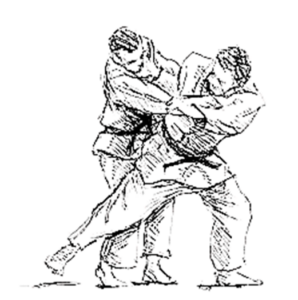
Judō history:
Judō or the gentle way was founded by Dr. Kanō Jigarō in 1982 after spending much of his earlier life studying jūjitsu under many talented teachers. Dr. Kanō opened his dōjō, the kodokan, in Tokyo that same year. Judō spread throughout Japan after a tournament was held between judō-ka and jūjitsu practitioners. When the judo–ka won, they became the official hand to hand instructors of the Tokyo police force. From this fame, Dr. Kanō was able to get judō accepted into the Olympics. Unfortunately, Dr. Kanō never saw his dream fully realized because the Olympics were not held that year in Tokyo as planned because of World War Ⅱ. Once again, in 1985, judō was accepted as an Olympic sport.
Judō genri (principles):
Ju no ri:
Ju no ri are the principles of gentleness or softness. The art of judō is built on the idea of less resistance is best. When your opponent pushes, then use that push to your advantage. When your opponent pulls, also use that to your advantage. Muscle does not equate to good judō. Instead, a weaker opponent should be able to throw the stronger. The smaller man should be able to defeat the larger. Therefore we should become empty uniforms so we present no weakness. Kanō‘s vision for judō were the principles of “seiryoku zenyō,” “maximum efficiency, minimum effort” and jita kyōei “mutual welfare and benefit”. He showed the application of seiryoku zenyō with the concept of jū yoku gō o seisu, “softness controls hardness”.